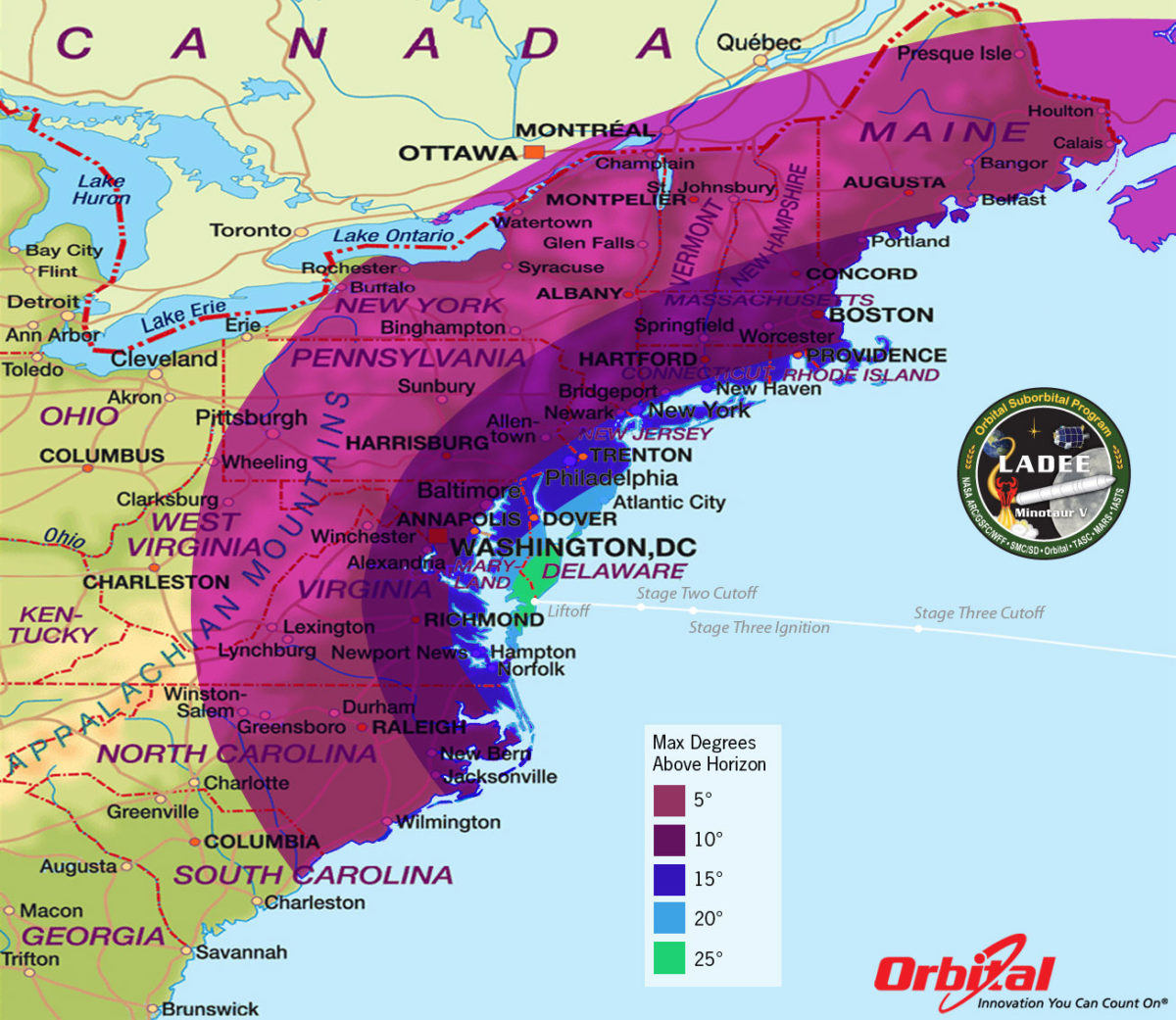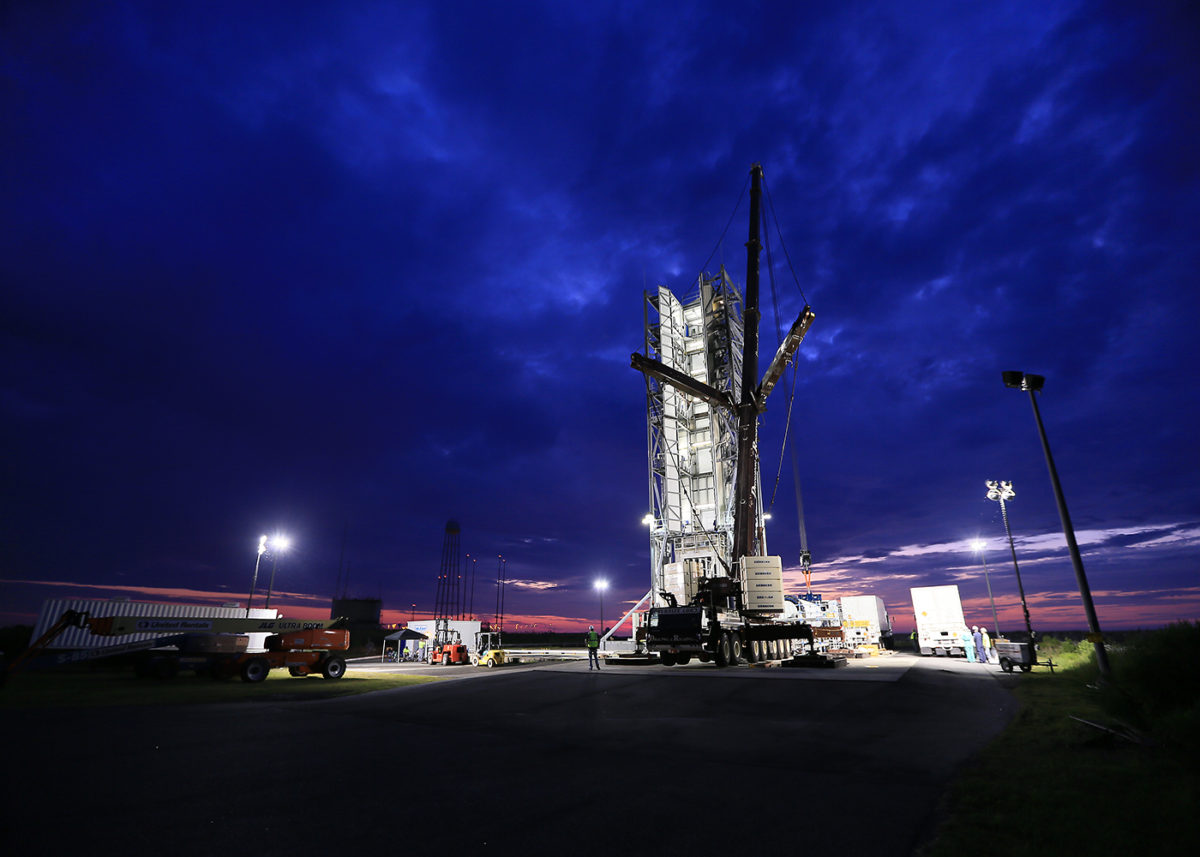Emily Lakdawalla • Aug 22, 2013
LADEE prepares for launch
Just yesterday I wrote about a mission preparing for launch to Mars; but before MAVEN even gets to the launch pad, we'll be seeing a launch toward the Moon. LADEE's launch window opens two weeks from today, on September 6. The brief little mission aims to study the lunar atmosphere and dust environment before future spacecraft landings disturb its currently pristine state. LADEE carries three science instruments: a dust sensor (with heritage from Cassini's CAPS instrument), an ultraviolet spectrometer (almost identical to the one that LCROSS carried to the Moon), and a neutral mass spectrometer (based on part of Curiosity's SAM instrument). Every spacecraft is different; yet they're based on every other spacecraft that's ever flown, not just to the Moon, but also to Saturn and Mars!
But before LADEE can do science, it has to launch. That will happen on a U.S. Air Force Minotaur V rocket, the maiden flight of this particular rocket configuration. It's a five-stage rocket, the first three of which are repurposed from a ballistic missile. The upper two stages are commercial rocket motors. I always love a good swords-into-plowshares story. But the novelty of the launch vehicle has observers (by which I mean me) nervous. I will be the first to admit that I get nervous about any rocket launch, even on old proven vehicles like Delta II's. Please don't let it blow up. Please don't let it blow up. Please don't let it blow up.
The other unusual thing about the launch is that it's happening from NASA Wallops Flight Facility, which is on Wallops Island, in Virginia. This is within spitting distance of Washington, D.C., and since it's a midnight launch (it's scheduled for 11:27 p.m. local time), it will be visible, at least theoretically, to a substantial portion of the U.S. population, weather permitting (and assuming people bother to go outside to try to spot it, which you should really do, because how often is this going to happen?). Here's a map:

For more maps and some really neat simulations of how the launch will appear from various landmarks, visit the Orbital Sciences Corporation's Minotaur V website. (Orbital converted the missile to its peacetime use.)
Here's a recent photo showing the rocket being stacked.

And here is a really cool new artist's concept of the mission that shows sunlight scattering through dust just above the lunar surface -- which is, of course, what LADEE is going to the Moon to study.
LADEE's mission to the Moon will be very brief, unfortunately. In order to measure lunar dust and atmosphere, you have to be very, very close to the surface. But the lunar gravity field is extremely lumpy, which means that it takes a lot of fuel to stay in orbit. LADEE will take a month to get to the Moon, and a month to commission its science instruments in an initial orbit. It will also test out new laser communication technology during the commissioning phase. Then it'll head downward to a low science orbit, and survive about four months before being intentionally crashed into the lunar surface.
Go LADEE! Go Minotaur!
Support our core enterprises
Your support powers our mission to explore worlds, find life, and defend Earth. You make all the difference when you make a gift. Give today!
Donate

 Explore Worlds
Explore Worlds Find Life
Find Life Defend Earth
Defend Earth


